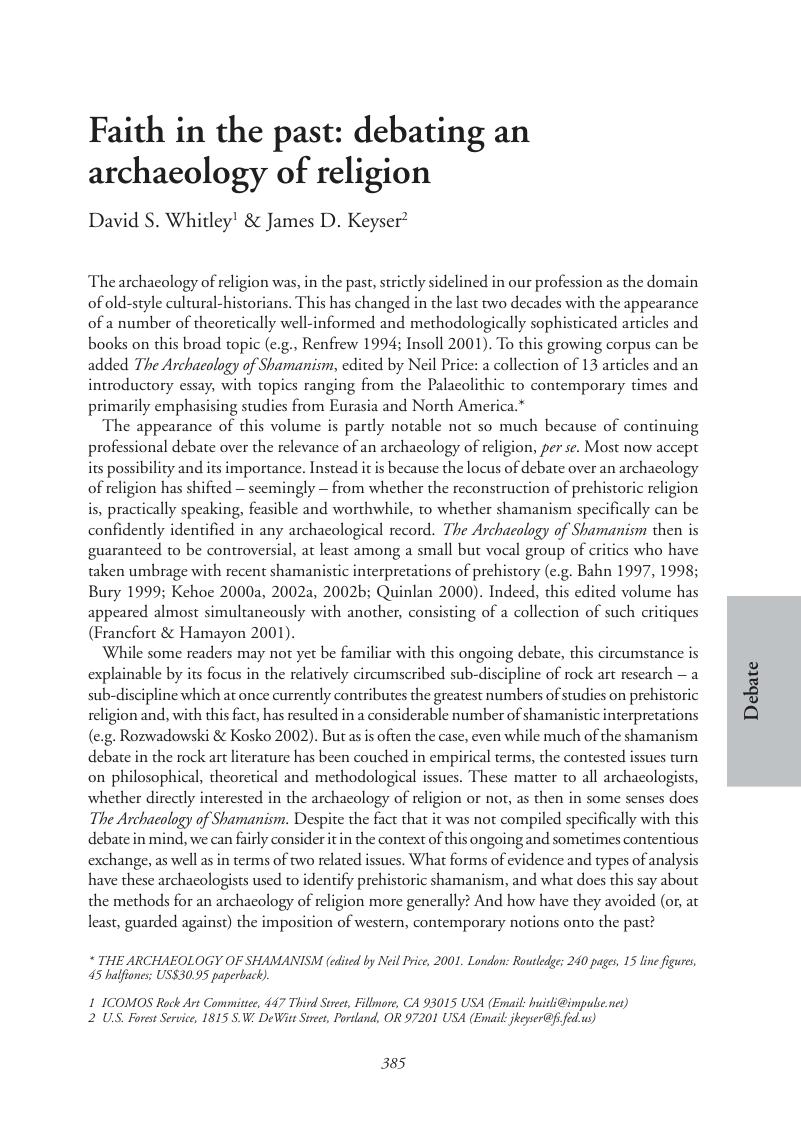Crossref Citations
This article has been cited by the following publications. This list is generated based on data provided by Crossref.
Lahelma, Antti
2005.
Between the Worlds. Rock Art, Landscape and Shamanism in Subneolithic Finland.
Norwegian Archaeological Review,
Vol. 38,
Issue. 1,
p.
29.
Howey, Meghan C. L.
and
O'Shea, John M.
2006.
Bear's Journey and the Study of Ritual in Archaeology.
American Antiquity,
Vol. 71,
Issue. 2,
p.
261.
Fogelin, Lars
2007.
The Archaeology of Religious Ritual.
Annual Review of Anthropology,
Vol. 36,
Issue. 1,
p.
55.
Carr, Christopher
Weeks, Rex
and
Bahti, Mark
2008.
The Scioto Hopewell and Their Neighbors.
p.
501.
Dorn, Ronald I.
Whitley, David S.
Villa Cerveny, Niccole
Gordon, Steven J.
Allen, Casey D.
and
Gutbrod, Elyssa
2008.
The Rock Art Stability Index.
Heritage Management,
Vol. 1,
Issue. 1,
p.
37.
Whitley, David S.
2009.
Comments on Howey and O'Shea's “Bear's Journey and the Study of Ritual in Archaeology”.
American Antiquity,
Vol. 74,
Issue. 1,
p.
183.
Cruz Berrocal, María
2011.
Analogical Evidence and Shamanism in Archaeological Interpretation: South African and European Palaeolithic Rock Art.
Norwegian Archaeological Review,
Vol. 44,
Issue. 1,
p.
1.
Allen, Casey D.
and
Lukinbeal, Chris
2011.
Practicing physical geography: An actor-network view of physical geography exemplified by the rock art stability index.
Progress in Physical Geography: Earth and Environment,
Vol. 35,
Issue. 2,
p.
227.
Berrocal, María Cruz
2011.
Johan Ling, Elevated Rock Art: Towards a Maritime Understanding of Rock Art in Northern Bohuslän, Sweden (GOTARC Serie B. Gothenburg Archaeological Thesis
49, 2008, 271 pp., illustrations, 3 appendices, CD, ISBN 978-91-85245-34-8).
European Journal of Archaeology,
Vol. 14,
Issue. 3,
p.
503.
Aldenderfer, Mark
2011.
3
Envisioning a Pragmatic Approach to the Archaeology of Religion.
Archaeological Papers of the American Anthropological Association,
Vol. 21,
Issue. 1,
p.
23.



